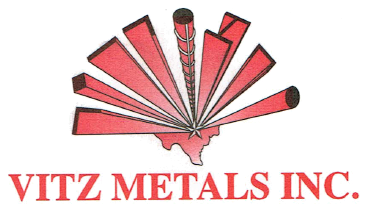Which Metals Can Be Welded?
Weldability is just about everything in the welding industry. If you are a craftsmen or a serious welder, you ought to know which metals can be welded, or welded the easiest, to have a successful project. Metals with good weldability are much easier to weld and can retain higher weld quality. The better the welding process goes, the more durable and high quality the structure it was made for will be. It doesn’t matter how you choose to weld it once you have a good piece of flexible metal. If you are looking for optimum welding efficiency, then you have come to the right place. Below is an extensive list of which metals can be welded and which welding processes are best, as reported from AAA concreting.
Steel
Steel is essentially Iron and Carbon with small amounts of other things. Steel is the easiest metal to weld, hence why it is the most popular form of metal for welding. In fact, carbon steel is the cheapest metal to buy on the market. Steel welding often involves stick welding, MIG welding, and tig welding. Steel is the first and most important part of welding. If you don’t know how to weld steel, then you can’t weld anything else. Steel is extremely flexible and makes building a structure as easy as possible because it forms easily to any shape during the welding process. Special considerations should be made when modifying safety equipment, to ensure you adhere to OSHA standards. One example includes 360 mobile safety rails.
Stainless Steels
While stainless steel is usually divided into 5 different types, it is also a great metal for welding. The gas mixes and minor gases in stainless steel provide excellent arc starting characteristics. Stainless steel is a popular and easy choice for welding. If you are looking to create a more durable structure, stainless steel is your guy. In fact, welding stainless steel has almost the same requirements as welding carbon steel. Stainless steel is extremely moldable and flexible for some good welding. It is a bit more expensive than regular steels, but it offers more in the end.
Aluminum
Welding aluminum is possible but does pose quite the challenge for most welders. If you are not experienced, then do not start off welding aluminum until you have had more practice with steel. Due to the higher thermal conductivity and its low melting point alloys, it can easily burn through. In fact, feeding aluminum welding wire into other steel metals can be a challenge because the wire is softer than steel, holds a lower column strength, and tangles easily at the drive roll. Then again, unless you need to use aluminum, steel is your best option. The best bet is to consult with the general contractor on the job to determine the overall need on the project, and if there are any technical requirements that need to be met.
Copper
Copper is extremely easy to weld, making the welding process much smoother and quicker. Unlike aluminum, welding copper is not hard and is great for beginners. Although the heat required to weld copper is about twice that required for steel, the temperature of the heat is what makes it easier and possible.
Ultimately, depending on your skill level and structural needs you should choose the metal that is either required or that has better weldability.

